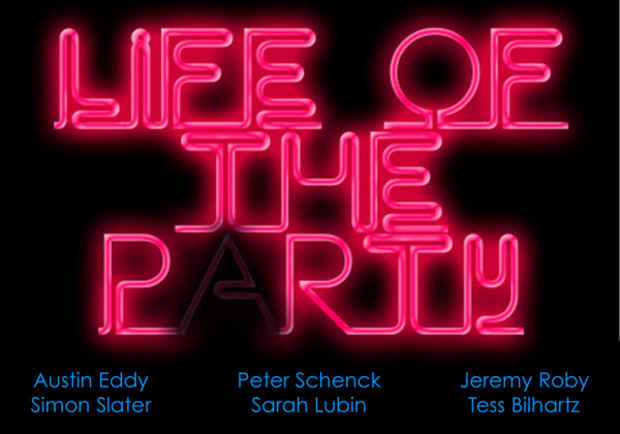“Life of the Party” Exhibition
Fowler Project Space

This event has ended.
Everyone wants to be the life of the party, but most of us also grapple with the need to be apart from the group, either in search of solitude or for the purpose of breaking new ground, be it intellectually, materially or physically. Each artist in this exhibition addresses the need for both outside acceptance and for isolation.
This is a bittersweet exhibition for Fowler as it is actually our last. After receiving a large rent increase this summer, we have decided to close the exhibition program to better concentrate on supporting the artists who work in our space. It has been a great four years of producing amazing exhibitions. Thank you to all the artists who made the gallery space an inspiring and energetic place. Come be a part of our last month of gallery programming and toast to Brooklyn, art, artists, and to forgetting all the little forgettings. May we never stay the same, may we never have to change.
Tess Bilhartz weaves a full narrative of cool to ominous with the juxtaposition of two, equally sized canvases. In the first image, we are drawn to a man taking a tired, reluctant drag of a cigarette. His melancholy is only partially camouflaged by his upbeat, brightly patterned glasses. The next and final image is of the man’s mouth and chin blown up to a nightmarish scale. His exhaling fills the canvas with almost nuclear neon green puffs of smoke. This is hardly a group of images resembling the Marlborough Man.
Austin Eddy’s paintings are a mixture of cowboy swagger and boyhood prankish wit. But residing in plane site of his gregarious, pipe-smoking, cowboy-booted protagonists are silhouetted, shadowy doppelgangers meant to interrupt and possibly end the party at hand.
Sarah Lubin constructs multi-figurative paintings, but the figures remain aloof from one another, preferring to focus in on the mundane, meditative routine of daily activities. Putting on socks, holding a cup, or propping one’s head up with a casually bent arm on a desk serve as the introduction to each figure’s seemingly voluntary isolation.
Jeremy Roby squeezes a Lego-like blockhead into the narrow confines of a rectangular picture plane. A young boy fills up half of the painting’s composition with his own tears, submerging the lower half of his stunned, bug-eyed face in salt water. Unaware of his transgression, we as the viewer share in his shame. Roby’s imagery evokes the same playful adolescence of catching a child with his hand still in the cookie jar, but we feel some darkness lurking beneath.
Peter Schenck de-constructs the body and re-builds it to suit his compositional needs. Tree trunk-like, Guston-esque legs are wrapped in colorful patterns of stripes and plaids. A gloved hand in the foreground presents a pizza-shaped wedge. Is this meant as an offering or as a defensive shield? Schenck’s figures are loud and bright, but they are equally evasive and on guard.
Simon Slater cloaks his subject matter in all over patterning, concealing his work’s true identity. Through the use of comedic timing, he waits until just the right moment to land each punch line. Pizza slices, breasts, and splattering beer bottles are all ripe territory for Slater. He enjoys the game of concealment, but the joke teller in him can’t wait to expose the gag.
All of the figures in these paintings have it in them to be the Life of the Party, but it’s what separates them from such inclusion that intrigues us and makes them relatably human.
Media
Schedule
from September 12, 2014 to October 05, 2014
Opening Reception on 2014-09-12 from 19:00 to 22:00
Artist(s)
Tess Bilhartz, Austin Eddy, Sarah Lubin, Jeremy Roby, Peter Schenck, Simon Slater